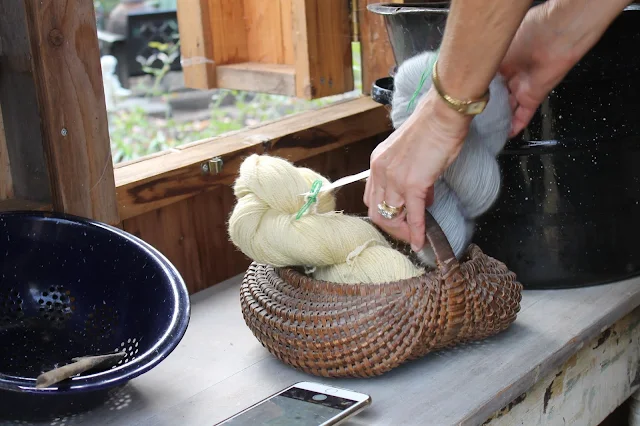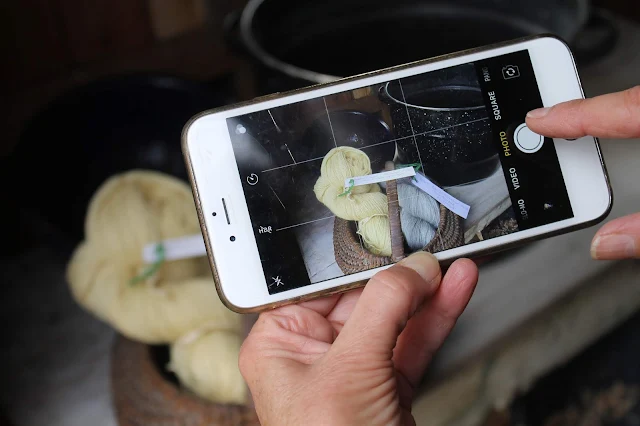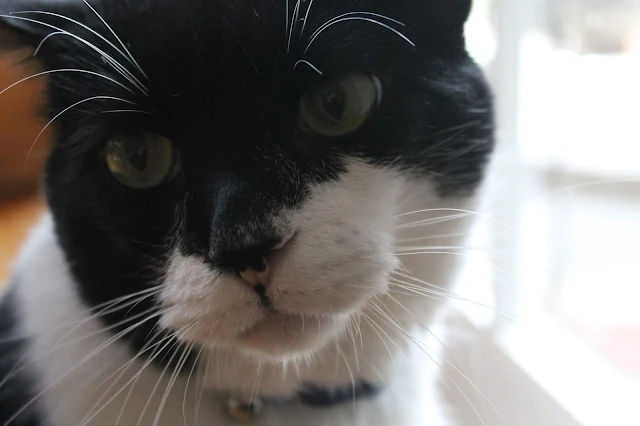Looking outside and taking in the autumnal beauty, my mind can not but help to think of natural dyeing. What colors are hidden in the weeds, the faded flowers, the barks, and the lichens? And what about in my kitchen, and those things I observe in my everyday life? Experimentation is the key, and the magic happens when the yarn is lifted from out of the dye bath, rinsed in cold water, and hung to dry.
So two more dye pots were formulated, one with black beans and the other with nasturtium leaves and stems. I had seen on Pinterest the various colors that come from black beans so I was itching to try it. Dyeing with black beans involves a cold-bath dye which took me a total of four days, two days to make the dye and two more for the wool to process in the dye. I was truly hoping to get a vivid blue yarn, and while it was definitely not blue, it did turn out to be a very lovely gray with the slightest hint of violet.
I waited until the prediction of a frost before I reluctantly pulled up some of my nasturtium plants creating a dye bath from the leaves and stems. (Thankfully, I did not need to pull them all up because the nasturtiums in my garden on the south side are still blooming beautifully.) I put this dye bath on one afternoon and let it simmer for a couple of hours, then after cooling I immersed the mordanted wool into the dye. I am very pleased with the flaxen-yellow color that resulted from the nasturtiums dye bath.

I did, however, apply a tablespoon of vinegar. My spigot water is not neutral(7), but has a higher alkaline reading. Next time I plan to apply a larger amount of vinegar to the black bean dye bath.

As always the photography was mainly done by Charlotte, I always do appreciate her creative bent. And she just seems to catch those in between shots too, like me standing on a chair in my slippers, and of the renowned George looking out through the glass door...appearing somewhat bored with our going ons.












No comments:
Post a Comment